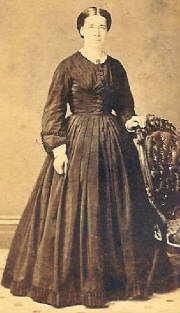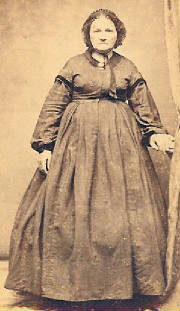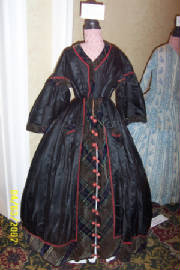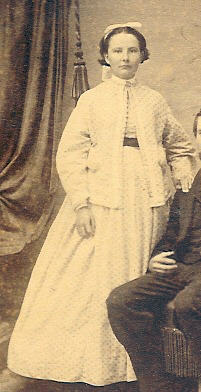|

Everyday garments, in most instances, are not garments
you would wear working in the garden or slopping the hogs; these are garments that you would wear going about your household
duties. They are not a best dress such that you would wear to church or on a special occasion but are acceptable for receiving
guests, making calls and running errands.

Daily wear, like everything else, depends primarily on your impression, and the event
scenario. If your impression is lower class your everyday dress will probably be your work dress regardless of the war year
you are interpreting. Up to the middle of the war, a plain dress of cotton, wool, or silk worn with hoops is appropriate for
middle class, while a fashionable wool or silk dress would be appropriate for a wealthier impression. As you move through
the war years, your dress may become more worn, perhaps patched and stained. However, few in Texas were truly
reduced to wearing ragged dresses or homespun out of necessity until late in the war.
For late war scenarios in Texas,
everyday wear will change. As fabric became scarce and expensive and clothing wore out, homespun was then utilized, old dresses
were made over, secondhand clothes became more common within the middle class and better dresses moved down the hierarchy
to become everyday wear and work dresses, except for the extremely wealthy.
|
|
Wrappers and
Sacque Bodices

|
| Wrapper |
Wrappers were worn prior to getting dressed for
the day. They were worn with the proper undergarments. One might wear a wrapper at the breakfast table or if receiving guests
while ill or who are intimate friends. Generally a wrapper would not be worn on the street.

|
| Sacque |
Simple saques without trim and made of coarser fabrics
were often worn while working at home. Worn with the proper undergarments, trimmed and of finer fabrics, they were sometimes
worn at the seaside or watering places.
|

